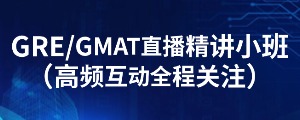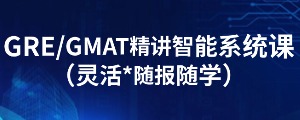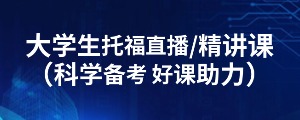选课中心
7099人选课
GRE公开讲座
0元
GMAT公开讲座
0元
一对一体验课
99元
GRE模考网站
10000人
托福备考练习HOT
39209人预约
GRE辅导课程
17537 人
GMAT辅导课程
17537 人
托福辅导课程
17537 人
【定制】1v1
私人订制
资料下载
考前冲刺

扫码关注掌握一手留学资讯
回复XDF免费领
水平测试和备考资料

扫码关注公众号
为了帮助大家高效备考GRE,新东方在线GRE频道为大家带来“GRE阅读模拟在线练习题附答案二百三十三”,希望对大家GRE备考有所帮助。更多精彩尽请关注新东方在线GRE频道!
The age at which young children begin to make moral discriminations about harmful actions committed against themselves or others has been the focus of recent research into the moral development of children. Until recently, child psychologists supported pioneer developmentalist Jean. Piaget in his hypothesis that because of their immaturity, children under age seven do not take into account the inten- tions of a person committing accidental or deliberate harm, but rather simply assign punishment for transgressions on the basis of the magnitude of the negative consequences caused. According to Piaget, children under age seven occupy the first stage of moral development, which is characterized by moral absolutism (rules made by authorities must be obeyed) and imminent justice (if rules are broken, punishment will be meted out). Until young children mature, their moral judgments are based entirely on the effect rather than the cause of a transgression. However, in recent research, Keasey found that six- year-old children not only distinguish between accidental and intentional harm, but also judge intentional harm as naughtier, regardless of the amount of damage produced. Both of these findings seem to indicate that children, at an earlier age than Piaget claimed, advance into the second stage of moral development, moral autonomy, in which they accept social rules but view them as more arbitrary than do children in the first stage. Keasey's research raises two key questions for develop- mental psychologists about children under age seven: do they recognize justifications for harmful actions, and do they make distinctions between harmful acts that are preventable and those acts that have unforeseen harmful con- sequences? Studies indicate that justifications excusing harmful actions might include public duty,selfdefense, and provocation. For example, Nesdale and Rule concluded that children were capable of considering whether or not an aggressor's action was justified by public duty: five year olds reacted very differently to "Bonnie wrecks Ann's pretend house" depending on whether Bonnie did it "so somebody won't fall over it" or because Bonnie wanted "to make Ann feel bad." Thus, a child of five begins to under- stand that certain harmful actions, though intentional, can be justified; the constraints of moral absolutism no longer solely guide their judgments. Psychologists have determined that during kindergarten children learn to make subtle distinctions involving harm. Darley observed that among acts involving unintentional harm, six-year-old children just entering kindergarten could not differentiate between foreseeable, and thus preventable, harm and unforeseeable harm for which the perpetrator cannot be blamed. Seven months later, however, Darley found that these same children could make both distinc- tions, thus demonstrating that they had become morally autonomous.
Which of the following best describes the passage as a whole?
A.An outline for future research
B.An expanded definition of commonly misunderstood terms
C.An analysis of a dispute between two theorists
D.A discussion of research findings in an ongoing inquiry
E.A confirmation of an established authority's theory
According to the passage, Darley found that after seven months of kindergarten six year olds acquired which of the following abilities?
A.Differentiating between foreseeable and unforeseeable harm
B.Identifying with the perpetrator of a harmful action
C.Justifying harmful actions that result from provocation
D.Evaluating the magnitude of negative consequences resulting from the breaking of rules
E.Recognizing the difference between moral absolu- tism and moral autonomy
According to the passage, Piaget and Keasey would not have agreed on which of the following points?
A.The kinds of excuses children give for harmful acts they commit
B.The age at which children begin to discriminate between intentional and unintentional harm
C.The intentions children have in perpetrating harm
D.The circumstances under which children punish harmful acts
E.The justifications children recognize for mitigating punishment for harmful acts
According to the passage, Keasey's findings support which of the following conclusions about six-year-old children?
A.They have the ability to make autonomous moral judgments.
B.They regard moral absolutism as a threat to their moral autonomy.
C.They do not understand the concept of public duty.
D.They accept moral judgment made by their peers more easily than do older children.
E.They make arbitrary moral judgments.
It can be inferred form the passage that Piaget would be likely to agree with which of the following statements about the punishment that children under seven assign to wrongdoing?
A.The severity of the assigned punishment is deter- mined by the perceived magnitude of negative consequences more than by any other factor.
B.The punishment is to be administered immediately following the transgression.
C.The children assign punishment less arbitrarily than they do when they reach the age of moral autonomy.
D.The punishment for acts of unintentional harm is less severe than it is for acts involving accidental harm.
E.The more developmentally immature a child, the more severe the punishment that the child will assign.
According to the passage, the research of Nesdale and Rule suggests which of the following about five-year- old children?
A.Their reactions to intentional and accidental harm determine the severity of the punishments they assign.
B.They, as perpetrators of harmful acts, disregard the feelings of the children they harm.
C.They take into account the motivations of actions when judging the behavior of other children
D.They view public duty as a justification for acci- dental, but not intentional, harm.
E.They justify any action that protects them from harm.
正确答案:D A B A A C
以上就是关于“GRE阅读模拟在线练习题附答案二百三十三”的内容,更多精彩内容,请关注GRE频道!

 资料下载
资料下载
2024中国学生留学备考白皮书下载
发布时间:2024-05-20添加新东方在线美研助教号
回复【资料】获取
GRE高频真词表资料下载
发布时间:2024-05-20添加新东方在线美研助教号
回复【资料】获取
GRE数学-OG官方150题资料下载
发布时间:2024-05-20添加新东方在线美研助教号
回复【资料】获取
GRE数学常用词汇资料下载
发布时间:2024-05-20添加新东方在线美研助教号
回复【资料】获取
2024GRE数学重点突破资料下载
发布时间:2024-05-20添加新东方在线美研助教号
回复【资料】获取
2024GMAT模考题&答案资料下载
发布时间:2024-05-20添加新东方在线美研助教号
回复【资料】获取
GRE&GMAT阅读难句教程资料下载
发布时间:2024-05-20添加新东方在线美研助教号
回复【资料】获取
2024年托福考试重点题目资料下载
发布时间:2024-05-20添加新东方在线美研助教号
回复【资料】获取
托福独立口语必练70题资料下载
发布时间:2024-05-20关注新东方在线美研订阅号
回复【GRE】获取
托福口语综合口语精听50题节选资料下载
发布时间:2024-05-20添加新东方在线美研助教号
回复【资料】获取
托福听力1200词资料下载
发布时间:2024-05-20添加新东方在线美研助教号
回复【资料】获取
托福写作综合写作练习册-听力精听25篇资...
发布时间:2024-05-20添加新东方在线美研助教号
回复【资料】获取
托福写作综合写作练习册-阅读改写50篇资...
发布时间:2024-05-20添加新东方在线美研助教号
回复【资料】获取
托福阅读核心词表1500词(前30天优先必学...
发布时间:2024-05-20添加新东方在线美研助教号
回复【资料】获取

添加美研助教号,
回复【GRE】获取备考必看资料包

 推荐阅读
推荐阅读
备考GRE,对大部分同学来说也是一个新挑战,尤其是阅读部分,如何在有限的时间内大幅提高阅读速度呢? 快来本文看看吧。
本文今天为大家带来的是gre考试中easy等级难度的阅读片段,一起来看看吧!
2022年3月13-19日GRE阅读题回忆及答案(六)来啦,来本文和新东方在线GRE一起来看看详细信息吧。
2022年3月13-19日GRE阅读题回忆及答案(五)来啦,来本文和新东方在线GRE一起来看看详细信息吧。
2022年3月13-19日GRE阅读题回忆及答案(四)来啦,来本文和新东方在线GRE一起来看看详细信息吧。
2022年3月13-19日GRE阅读题回忆及答案(三)来啦,来本文和新东方在线GRE一起来看看详细信息吧。
2022年3月13-19日GRE阅读题回忆及答案(二)来啦,来本文和新东方在线GRE一起来看看详细信息吧。
2022年3月13-19日GRE阅读题回忆及答案(一)来啦,来本文和新东方在线GRE一起来看看详细信息吧。
2022年2月13日GRE阅读题回忆及答案来啦,来本文和新东方在线GRE一起来看看详细信息吧。
2022年2月13日GRE阅读题回忆及答案来啦,来本文和新东方在线GRE一起来看看详细信息吧。


 GRE/GMAT直播精讲小班
GRE/GMAT直播精讲小班
 GRE/GMAT精讲智能系统课
GRE/GMAT精讲智能系统课
 托福直播/精讲课(30天/60天)
托福直播/精讲课(30天/60天)
添加美研助教号,
回复【GRE】获取备考必看资料包

 资料下载
资料下载
添加新东方在线美研助教号
回复【资料】获取
添加新东方在线美研助教号
回复【资料】获取
添加新东方在线美研助教号
回复【资料】获取
添加新东方在线美研助教号
回复【资料】获取
添加新东方在线美研助教号
回复【资料】获取
添加新东方在线美研助教号
回复【资料】获取
添加新东方在线美研助教号
回复【资料】获取
添加新东方在线美研助教号
回复【资料】获取
关注新东方在线美研订阅号
回复【GRE】获取
添加新东方在线美研助教号
回复【资料】获取
添加新东方在线美研助教号
回复【资料】获取
添加新东方在线美研助教号
回复【资料】获取
添加新东方在线美研助教号
回复【资料】获取

 阅读排行榜
阅读排行榜
 相关内容
相关内容